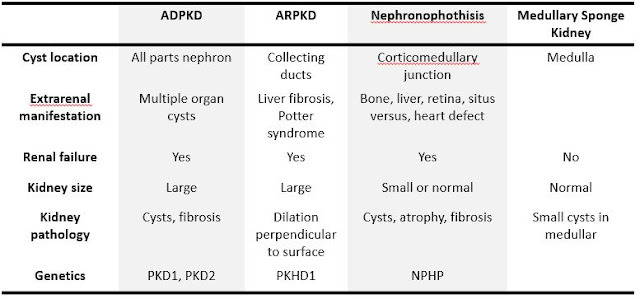Medullary cystic kidney disease
Medullary cystic kidney disease Updated: 10/04/2018 © Jun Wang, MD, PhD General features Autosomal dominant AKA autosomal dominant interstitial kidney disease (ADIKD) or autosomal dominant tubulointerstitial kidney disease (ADTKD) No extrarenal involvement Three subtypes Uromodulin kidney disease (UKD) ADTKD DUE TO MUTATIONS IN THE REN GENE (ADTKD-REN) Mucin-1 kidney disease (MKD) Pathogenesis Loop of Henle deficiency due to uromodulin mutation (UKD) Accumulation of prerenin in tubules due to renin mutation (ADTKD-REN) Abnormal intracellular localization of mucin-1 in renal tubules (MKD) Clinical features Family history of kidney disease and gout Adult-onset progressive renal failure Early onset gout (teenage years) Pathological findings Similar to nephronophthisis Back to kidney masses Back to contents
